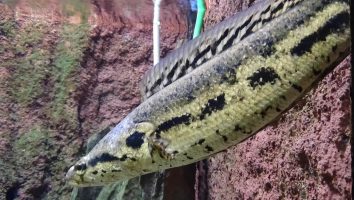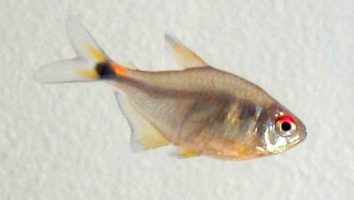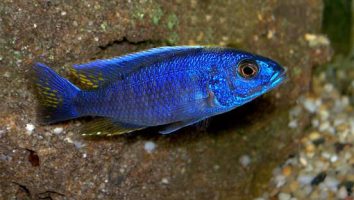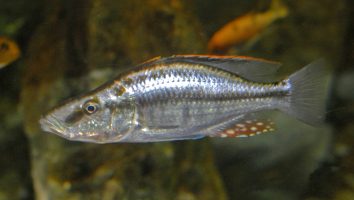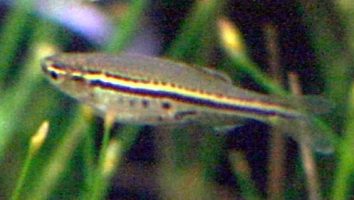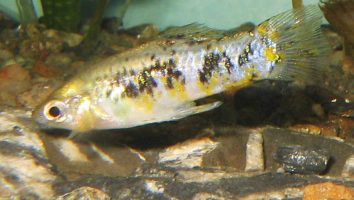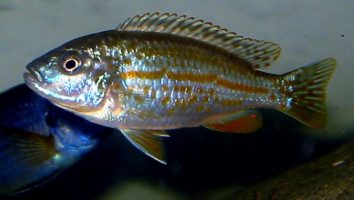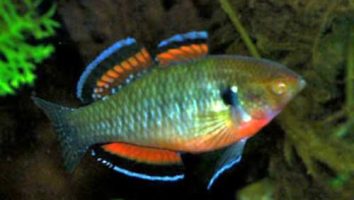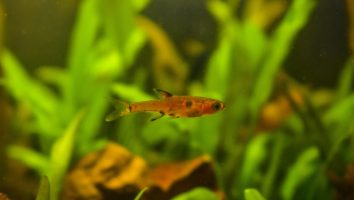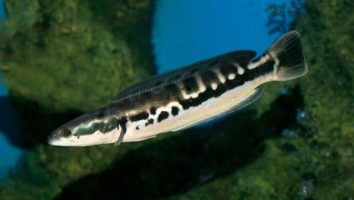The Midas cichlid (Amphilophus citrinellus) is a striking fish that is popular in the aquarium trade. They are known for their beautiful coloration, which can range from yellow to orange to red.
Midas cichlids are relatively easy to care for, but they can be aggressive towards other fish. It is important to provide them with plenty of hiding places and to choose tank mates carefully.
This guide will teach you everything you need to know about Midas cichlid care. You’ll learn about their diet, size, lifespan, and more!
Table of contents
Species overview
The Midas cichlid (Amphilophus citrinellus) is a freshwater fish that’s native to Nicaragua and Costa Rica.
They prefer slow-moving waters with a lot of vegetation, and they are often found in rivers and lakes.
The Midas cichlid gets its name from the bright yellow coloration of its body. This color is often intensified in males, making them even more striking.
Although they are beautiful fish, Midas cichlids can be quite aggressive. They are known to be territorial and may fight with other fish that they perceive as a threat.
For this reason, it’s important to be careful when choosing tank mates for a Midas cichlid. You’ll want to choose fish that are peaceful and not likely to start any trouble.
Appearance

The Midas cichlid is one of the most striking freshwater fish in the world. The primary color of their body is yellow, but it can range from a pale lemon to a deep gold.
The coloration is pretty even all over their body with a few darker spots near the dorsal fin and tail. The fins on this fish are also yellow, but they can have a bit of orange or red mixed in.
The Midas cichlid has an elongated body that tapers towards the tail. They have a large dorsal fin that starts about two-thirds of the way back on their body. This fin can have up to 20 rays!
The anal fin on this fish is much smaller and only has 3-4 rays. Both of these fins have a black margin that really makes them stand out.
The caudal fin of the Midas cichlid is forked and symmetrical. This fish also has black margins on their pectoral and ventral fins.
One of the most unique features of this fish is the long filament that extends from the back of the males dorsal fin. This filament can be up to twice the length of the fin itself!
Lifespan
The average lifespan of a Midas cichlid is around 10 years. There are a number of factors that impact their life expectancy.
For starters. if these fish haven’t reproduced then their lifespan will usually be on the higher side of this range. That process can really take a toll on the fish.
The general level of care they receive obviously matters a great deal as well. Even though these are very hardy fish, they’ll obviously live longer in optimal conditions.
Size
The Midas cichlid can grow to be about a foot long, but the average size is closer to 8 inches. Males tend to be larger than females, and they also have more pronounced fins.
Tank
Tank Size
The recommended tank size for a single Midas cichlid is 150 gallons.
This is a very large fish that needs a lot of space to move around. If you want to keep multiple Midas cichlids together, you should add at least another 150 gallons for each fish.
Water Parameters
The Midas cichlid is a tropical freshwater fish that is native to Central America. In the wild, they are found in slow-moving rivers and streams with a sandy bottom.
Midas cichlids are very sensitive to changes in water parameters. They need clean, well-filtered water with a stable pH between 7.0 and 8.5. The water temperature should be between 75 and 80 degrees Fahrenheit.
Cichlids are also very sensitive to nitrates and ammonia. Ammonia and nitrites should be kept at 0 ppm. Nitrates should be kept below 20 ppm.
- Water Temperature: 75 to 80 degrees Fahrenheit
- pH Levels: 7.0 to 8.5
- Water Hardness: 5 to 19 dGH
- Alkalinity Levels: 3-10 dKH
What To Put In Their Tank
These fish come from Central America and as such their natural habitat is one that’s fairly warm and has a lot of vegetation.
That being said, you don’t need to go overboard with the plants in their tank. A few pieces of driftwood and some rocks will do just fine.
The substrate you use is also up to you, but we recommend something that’s on the softer side. This will help prevent any scrapes or cuts if your fish decides to go on a digging spree.
As for the water itself, you’ll want to target a temperature between 75 and 80 degrees Fahrenheit. The pH level should be around 7.5 and the hardness should be moderate.
Common Diseases
The Midas cichlid is a pretty hardy fish, so you won’t have to worry about them falling ill too often. However, there are still a few diseases that you should be on the lookout for.
The most common disease that affects this species is ich. This is a parasites that will attach itself to your fish and cause white spots to form on their skin.
If left untreated, ich can be fatal. However, it’s relatively easy to treat if you catch it early.
Other diseases that can affect the Midas cichlid include hole-in-the-head disease and velvet disease. Both of these are caused by poor water quality and can be fatal if left untreated.
The best way to prevent your fish from getting sick is to maintain a clean and stable environment. This means regular water changes, using a high-quality filter, and avoiding overstocking your tank.
By taking these precautions, you can significantly reduce the chance of your fish getting sick.
Behavior & Temperament
The Midas cichlid is a generally peaceful fish, but it can be aggressive towards other cichlids of the same species. If you’re keeping more than one Midas cichlid, it’s best to have at least one female for every two males. Otherwise, the males may become too aggressive towards the females.
Midas cichlids are also known to be fin nippers. They may nip at the fins of other fish in the tank, so it’s best to keep them with fish that have thick fins or that are too large to be bothered by the nipping.
Midas cichlids are active fish and need plenty of space to swim. They’re also known to be diggers, so they need a tank with a substrate that they can’t dig up. A sand substrate is a good option.
Tank Mates
The Midas cichlid is a large and aggressive fish. As a result, it’s not the best candidate for a community tank. In fact, it’s best to only keep one Midas cichlid per tank unless you have a very large aquarium.
Midas cichlids are also territorial. They will defend their space and might even attack fish that are much larger than them. This is something to keep in mind when choosing tank mates.
With all of that said, there are still a few fish that can hold their own against a Midas cichlid. These fish are typically large, aggressive, and territorial as well.
Some good Midas cichlid tank mates include:
- Oscar Fish
- Green Terror Cichlid
- Blood Parrot Cichlid
- Convict Cichlid
- Jaguar Cichlid
- Red Devil Cichlid
Breeding
Midas cichlids are one of the easier species to breed in captivity. They don’t have too many specific requirements and will readily breed in the average home aquarium.
First, you need to set up a breeding tank. It should be at least 30 gallons and contain plenty of hiding places. Driftwood, caves, and plants are all good options.
Then, you need to adjust the water parameters. The ideal temperature is between 78 and 82 degrees Fahrenheit. The pH should be between 7.0 and 8.0.
When everything is ready, you can add your fish. Start with two females for every male. Females are typically smaller and have a more round body shape. Males are larger and have a more elongated body.
Midas cichlids are mouthbrooders. That means that the female will carry the eggs and fry in her mouth until they’re ready to be released into the world.
To trigger spawning, the female will clean an area of the tank. Once she’s ready, she’ll lay her eggs on a flat surface. The male will then fertilize them.
After the eggs are fertilized, the female will pick them up in her mouth and keep them there for protection. The fry will hatch after about three days.
Once they’re released, the fry will feed on microscopic organisms in the water. You can supplement their diet with baby brine shrimp or other small live foods.
Conclusion
The Midas cichlid is a beautiful fish that is relatively easy to care for. They are peaceful fish that get along well with other tank mates and make a great addition to any community tank.
The biggest downside to this fish is their size. They can grow to be quite large, so you will need a tank that is at least 75 gallons.
Other than that, we think the Midas cichlid is a great choice for any beginner or experienced fish keeper.

